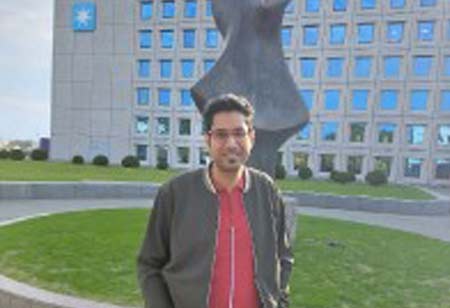A merger and acquisition expert with more than 16 years of experience in management consulting, Abhishek Mittal has worked on multi-billion dollar acquisitions with strategic players and private equity firms. His focus on strategy, planning, and execution of integrations, divestitures, and carve-outs positions him to lead M&A transactions for clients from various industries.
In an exclusive interview with Financial Services Review magazine, Abhishek Mittal shares his invaluable insights on designing efficient operating models for organizations during mergers and acquisitions (M&A). He also elaborates on the crucial role played by technology in improving operational efficiency after day one of the transaction.
What are the changes you have witnessed in the industry along your journey?
My expertise is in designing an organization’s operating model during its transaction and post-transaction period. An operating model is a visual representation of the internal and external organizational operations and navigates companies during deviations once the company executes a transaction. The various types of M&A transactions also dictate how one designs an innovative operating model for a company.
Active in the M&A space for 16 years, I have witnessed numerous changes in the transaction environment. Earlier, organizations merged to facilitate inorganic growth or acquire new product lines. Today, they execute transactions to be innovative and relevant in a highly competitive market.
This brought forth a change in how we perceive operating models during M&A transactions. Organizations today analyze more than the transaction’s impact on their as-is model and involve studying the possibilities of adopting technological innovations, like automation or data-driven analysis, to improve operating models, even after post-closure integration.
For example, accounts receivable (AR) and accounts payable (AP) are crucial financial activities for any organization, and they are typically outsourced to third parties for efficient management. However, companies have begun using a data-driven approach to identify and study the risks and opportunities in AR and AP management, enabling them to improve the process and be self-reliant.
“Being well-planned and prepared for day one means more than half the battle is won. A successful day one means companies can pass the right message to stakeholders and competitors.”
Companies have also begun documenting their operational processes and activities for standardization. As their processes become standardized, it facilitates easy implementation of data analytics and automation through AI and ML. It also allows organizations to function across multiple locations and handle several products simultaneously. Today, numerous companies use M&A transactions as an opportunity to standardize many of their operational processes.
What are some of the developments in the M&A space that you are looking forward to?
One aspect I believe companies should consider is the effect on an organization’s environment when planning and preparing for day one. When announcing an M&A, a company invests time and money to make day one successful and prepares a Future State Roadmap. However, most companies fail to adopt 100 per cent of the initially drafted roadmap once they start churning positive transaction results. This is one of the biggest loopholes or opportunity areas that everyone must work towards and achieve complete execution of the roadmap.
Another important development I want to witness, specifically during the integration phase, is improvement in achieving synergy. The main purpose of an acquisition is to achieve synergy in, not limited to, cost, revenue, and capital. Organizations must understand what they can achieve in the long run by acquiring other companies instead of chasing short-term goals.
It is normal not to achieve synergies in the first two to three years after the transaction. Most organizations fall into the trap of immediate cost-cutting or cross-selling to increase revenue and to report progress to stakeholders. When companies achieve cost and revenue synergy post-transaction by cutting down employees, rapidly implementing unfit technologies, and cross-selling, they often need to prepare to handle the sudden change and lose customers. The unpreparedness and haste to achieve synergy will inevitably cause harm to the brand image.
What are important factors to consider when executing an M&A transaction?
There are four aspects to consider when executing a transaction. In this context, execution implies the post-due diligence phase and working towards deal closure and execution of the transaction.
The foremost factor that any professional should consider is how to prepare for day one. Being well-planned and prepared for day one means more than half the battle is won. A successful day one means companies can pass the right message to stakeholders and competitors.
The second factor is preparing for a discovery phase, operating model, or baseline. Professionals should invest time to understand the core of the business to plan for a successful transaction. The third aspect they should focus on is identifying areas the organization wants to learn from during the ongoing transaction. The final factor that plays an instrumental role in the M&A process is that organizations running the deal should always maintain a consistent theme throughout the transaction.
Would you like to share some advice with fellow peers on implementing technology to develop better operational processes during M&A transactions?
When inculcating technology into operations, an organization’s first approach is to search for what is available in the market and what their competitors and peers are utilizing and quickly adopt them. These technologies may not necessarily be a fit for the organization’s operations. A common mistake numerous organizations make is adopting what is readily available in the market and asking their technological partner for customization after a few years. This leads to investing time, effort, and money to train employees on its implementation.
My advice is to adopt technologies after understanding the requirements and customize the solution rather than imitate industry competitors and peers.











